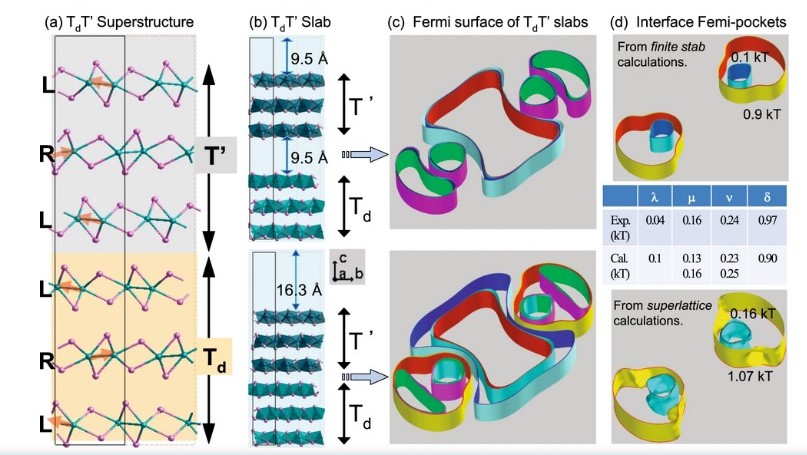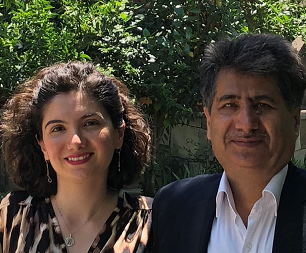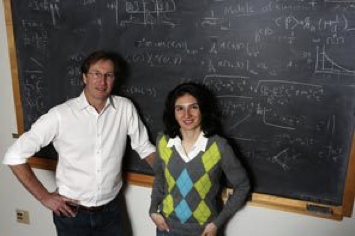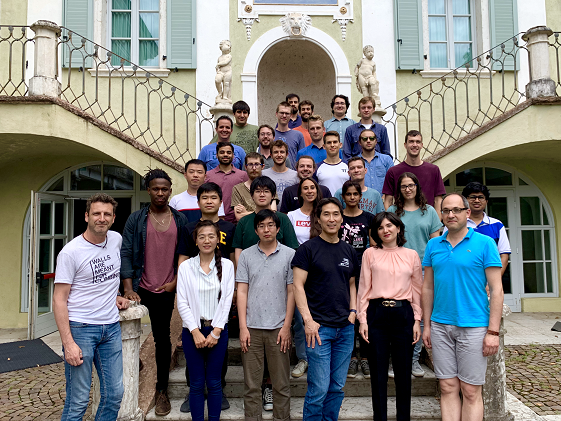Faculty, Staff, Student and Alumni Awards & Notes
- Details
- Category: Department News
- Published: Tuesday, September 08 2020 00:01
We proudly recognize members of our community who recently garnered major honors, authored books, began new positions and more.
Faculty and Staff
- Maissam Barkeshli was promoted to the rank of Associate Professor.
- Negar Heidarian Boroujeni was nominated for the Donna B. Hamilton Teaching Award. A nominator wrote: In high school I DREADED going to physics, but now it’s honestly so interesting to learn more!! You explain everything perfectly and you’re so good at communicating what you have to say to the students.
- Bill Dorland will be working over the next year as the Associate Director of Computational Science at the Princeton Plasma Physics Lab.
- Jim Drake was quoted in a Phys.Org story on solar flares.
- Jim Gates, John Mather and Bill Phillips participated in an Oxford University discussion of the Greatest Physics Discoveries of the 20th Century.
- Michelle Girvan and her COMBINE team offered a program on network epidemiology in the time of coronavirus in April.
- Nick Hadley retired from the department, but will remain active at the LHC's CMS experiment as a Research Professor.
- Mohammad Hafezi was named a Simons Investigator and a finalist for the Blavatnik Award.
- Carter Hall is the department’s new Associate Chair for Undergraduate Education.
- Wendell Hill is the new Director of the Chemical Physics Graduate Program.
- Christopher Jarzynski was elected to the National Academy of Sciences, named a Guggenheim Fellow and awarded a Simons Fellowship.
- Muge Karagoz was nominated for the Donna B. Hamilton Teaching Award. A nominator wrote: She is very knowledgeable in the material and is gifted in explaining it in a simple manner that allows me to understand it fully.
- Kiyong Kim was promoted to the rank of Professor.
- Daniel Lathrop described a plan to overhaul his experiment and create a better magnetic model of the Earth. In addition, he and his students were included in a Physics Today story about returning to the lab after the COVID-19 shutdown. He provided context on turbulence research for a recent story in Quanta Magazine.
- Vlad Manucharyan received his second Google Faculty Research Award to support work on superconducting quantum computing technologies.
- Rabi Mohapatra’s work was deemed one of the three most important papers in the first 50 years of Physical Review D.
- Chris Monroe was named to the National Quantum Initiative Advisory Committee (NQIAC).
- Edward Ott was elected a foreign member of the Academia Europaea.
- Joe Redish retired on June 30 after 52 years with the department.
- Matt Severson was nominated for the Donna B. Hamilton Teaching Award. A nominator wrote: Professor Severson is the best overall science teacher I’ve ever had. The concepts I thought were impossible, he made possible. I am forever thankful for him.
- Arpita Upadhyaya was named Co-director of the Biophysics graduate program.
- Ellen Williams spoke at the Accelerating Clean Energy Innovation workshop sponsored by the National Academies. She also discussed clean energy in an Al Jazeera interview. Williams was also named Director of UMD’s Earth System Science Interdisciplinary Center.
Students
- John Collini received a Department of Energy Graduate Student Research award.
- Kristi Lynne Engel received a Department of Energy Graduate Student Research award.
- Anna Grafov received a Fulbright Scholarship and a National Science Foundation Graduate Research Fellowship.
- John Hannegan was quoted about his work in Qudsia Quraishi’s lab.
- Caleb Harada received a National Science Foundation Graduate Research Fellowship.
- John Martyn received a National Science Foundation Graduate Research Fellowship.
- Eli Mizrachi received a Department of Energy Graduate Student Research award.
- Leeza Moldavchuk received a Subaru of America Foundation Scholarship.
- Scott Moroch received a Barry Goldwater Scholarship.
- Michael Nastac received a National Science Foundation Graduate Research Fellowship and the University Medal.
- Nick Poniatowski was named a finalist for the 2020 APS Apker Award. He has also been cited for his research accomplishments and was offered a National Science Foundation Graduate Research Fellowship.
- Mark Zic received a National Science Foundation Graduate Research Fellowship and was cited for his undergraduate research achievements
Alumni
- Aziza Baccouche (Ph.D. ’02) was a featured speaker during Penn State’s Black History Month.
- John Biddle (Ph.D. '16) was appointed as an assistant professor at Holy Cross College.
- Christopher Eckberg (Ph.D. ’19) received the Charles A. Caramello Distinguished Dissertation Award.
- Leslie Atkins Elliot (Ph.D. ’04) wrote about maintaining students’ interest in the classroom for Education Week Teacher.
- Yves Idzerda (Ph.D. ’86) was named Dean of the College of Letters and Science at Montana State University.
- Joel Kastner (B.S. ’81) was part of a team reporting the first detection of X-rays from the earliest phase of evolution of a star like our Sun.
- Delilah Gates (B.S. ’15) was the inaugural speaker in the NSBP Innovate Seminar Series.
- Alan Henry (B.S. ’02) was hired as service editor at Wired.
- Jainendra K. Jain, a postdoctoral researcher from 1986-88, co-edited a book titled “Fractional Quantum Hall Effects: New Developments.”
- Alan Nathan (B.S. ’68) is a frequently-quoted expert on the physics of baseball.
- Elizabeth Paul (Ph.D. ’20) received a Princeton Presidential Fellowship.
- Govindan Rangarajan (Ph.D. ’90) was appointed Director of the Indian Institute for Science.
- Sam Rombro (B.S. ’18) was a quiz bowl champion at the University of Arizona.
- Fred Strauch (Ph.D. ’04) was promoted to the rank of full Professor at Williams College.
- Alexander Wai (M.S. ’85, Ph.D. ’88) was appointed president and vice Chancellor of Hong Kong’s Baptist University.
- Thomas B. Wells (M.S. ’74, Ph.D. ’78) placed second in a congressional primary in Florida.
- Stephanie Williams (B.S. ’19) was featured by the American Association of Physics Teachers in their August 2020 spotlight.
- Jeremy Young (Ph.D. ’19) received an Honorable Mention for the Charles A. Caramello Distinguished Dissertation Award.
Department Notes
- The Department participated in the American Institute of Physics Task Force to Elevate African American representation in Undergraduate Physics & Astronomy (TEAM-UP). College Park Professor Jim Gates and College of Education Professor Sharon Fries-Britt served on the task force.
- UMD & NIST hosted a Conference of Undergraduate Women in Physics (CUWiP) in January.
- The Maryland Quantum Alliance—a regional consortium of quantum scientists and engineers from across academia, national laboratories and industry—launched in January. Recently, it was expanded as the Mid-Atlantic Quantum Alliance.
- Research by a team that includes Assistant Professor Norbert Linke, Graduate Student Nhung Hong Nguyen, and Visiting Graduate Student Cinthia Huerta Alderete was selected as one of the 2019 Top Picks in Computer Architecture by IEEE Micro.
- The Condensed Matter Theory Center launched a blog.
- The Statistical Research Center of the American Institute of Physics found that the department is a top producer of physics undergraduate degrees.
- Negar Heidarian Boroujeni, Dave Buehrle, Tom Gleason, Jordan Goodman, Carter Hall, Kara Hoffman and Ted Jacobson received campus funding to adapt instructional methods in the wake of the coronavirus.
- The Quantum Technology Center (QTC)—a joint venture between the A. James Clark School of Engineering and the College of Computer, Mathematical, and Natural Sciences—today entered into an education partnership agreement with the U.S. Naval Research Laboratory (NRL) to identify and pursue quantum technology research opportunities.




